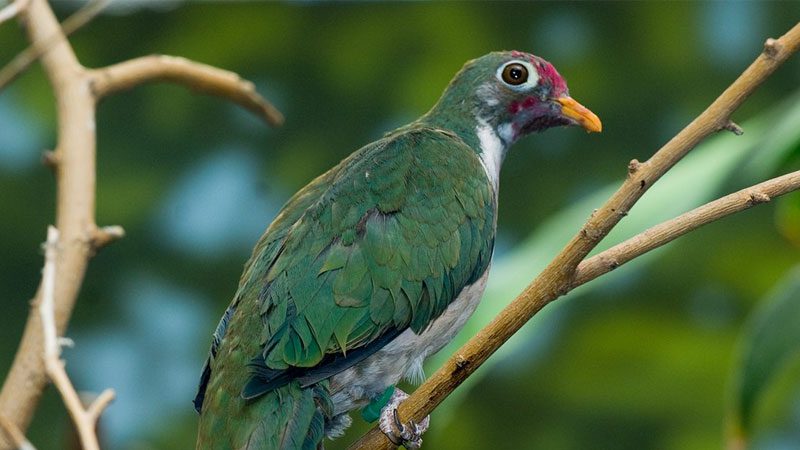Welcome to Lincoln Park Zoo’s new web app! Share your feedback

Jambu Fruit Dove
McCormick Bird House
Did You Know?
- As their name indicates, Jambu fruit doves feed on fruit produced by rainforest trees. They live in evergreen and mangrove forests.
- They are threatened by deforestation in Indonesia and Malaysia. Jambu fruit doves are also trapped for the pet trade.
- These doves appear to switch off egg incubation duties. Male doves care for eggs during the day, while females do so at night.
Don’t See the Animals?
Why aren’t animals visible at all times? To promote positive animal welfare, we provide animals with choices. They can choose to spend time in areas that are out of public view.

Take an Animal Home with You
Overview
Scientific Name: Ramphiculus jambu
Class: Birds
Diet: Fruit
Range: Southeast Asia
Endangered Status: Near Threatened
More Information
With a bright orange or yellow beak and green markings on their nape, back, wings, and tail, jambu fruit doves are brightly colored birds. Males also have a crimson face, white chest, and pink patch near their throat. Females have a light purple face and a green chest. These birds can get up to 10 inches in length.
Jambu fruit doves form monogamous pairs and often spend time in packs while feeding. They forage on the ground for fruit or take food from trees. Breeding takes place between November and February and in July. Egg are incubated for around 18 days, and both parents care for young until they fledge—as early as 10 days after hatching.
